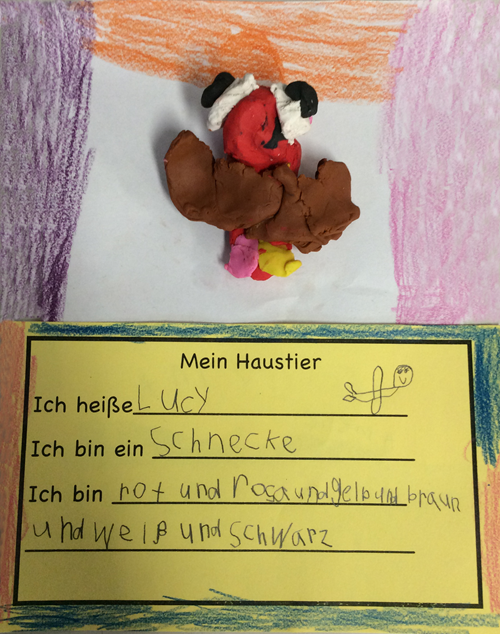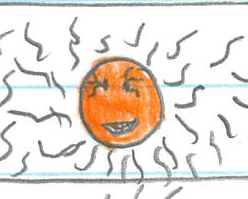Languages: German - Satisfactory - Foundation to Year 2
Portfolio summary
This portfolio of student works shows that the student can interact with teachers and peers through action-related talk and play (WS1, WS2). The student introduces themself, exchanges greetings and farewells and express likes and dislikes. When interacting, the student uses short formulaic expressions and simple statements (WS2, WS5). The student uses repetitive language (WS5) and responds to simple instructions when participating in games, shared activities and classroom routines (WS2, WS3, WS6). The student uses visual, non-verbal and contextual cues such as intonation, gestures and facial expressions to help make meaning (WS2, WS3, WS6), and reproduces some distinctive sounds and rhythms of spoken German (WS3, WS5, WS6). The student identifies specific words and information in simple shared texts related to their personal world (WS3) and conveys factual information about self, family and possessions at word and simple sentence level. The student responds to and creates simple spoken and written texts, using modelled examples and formulaic language (WS2, WS3, WS4, WS5) and uses short phrases and simple sentences to identify and describe people and objects (WS5). The student uses nein and nicht for negation, and verb forms bin, bist and ist, with an adjective (WS5). The student explains the meaning and use of different German words and expressions (WS1) and creates texts in German and English for their immediate learning environment (WS4, WS5).
The student identifies similarities and differences between German and their own language (WS4) and culture, noticing that using a language involves behaviours as well as words (WS1). The student identifies ways that German sounds different to English but recognises that it uses the same alphabet and identifies some words that are written the same in both German and English but pronounced differently (WS1, WS2, WS3, WS4). The student identifies features of different types of texts. The student gives examples of words that German and English borrow from each other and from other languages, and identifies different ways of greeting and interacting with people (WS1). The student makes connections between the languages people use and who they are and where they live (WS1).





